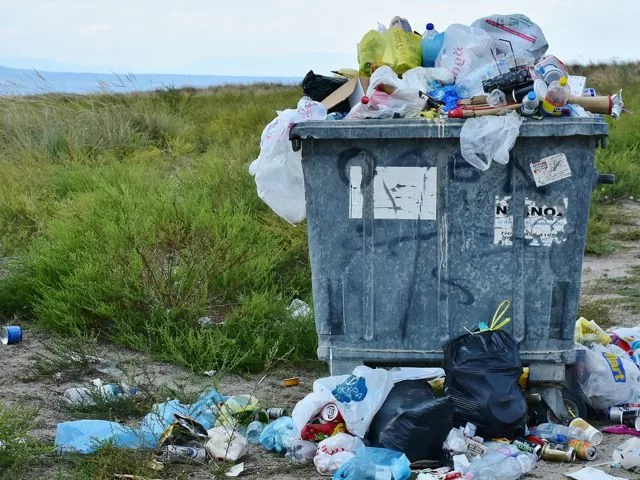Changing consumer demands in non-food products – What are the implications for the agro-industrial businesses and their product development?
Changing consumer demands always significantly impact product design and manufacturing methods, and this is increasingly true in the case of non-food products. This article looks at some of the challenges and opportunities for the supply of agricultural-based products into this market sector. The interest in green chemistry has been revitalised into a new renaissance with the ever growing consumer search for natural, sustainable lifestyles and products to match these expectations. When this is combined with a changing regulatory situation, raw material supply issues and considerably greater concern for the environment, a new picture emerges. This trend follows the path of food ingredient development, with the deliberate change to products manufactured with identified environmental care and utilising demonstrably natural components. For industries such as starch and sugar, exploration of these areas of development present real opportunities.
1 Introduction – The challenge
The dynamics of demand pressures on the production and development of non-food products in the 21st Century are constantly changing. Greater market competitiveness, raw material availability, more detailed regulatory requirements, global supply chain issues and growingly sophisticated consumer demands all have a very significant impact on how this sector develops. A key element that runs through all this is the concern for the environment and an ever-increasing desire for the ‘naturalness’ of a product, both intrinsically and demonstrably through the means by which it was produced. This trend within food ingredients and the wider food industry was long noted but clearly this extends into wider non-food areas with significant implications and opportunities for the agriculturally based products industry, especially starch. There is a growing acceptance of the need to begin to rethink business economics driven in part by looming price escalation through raw material shortages, climate change and environmental degradation. The rethink has often been termed the ‘closed loop’ or ‘circular’ economy as an alternative to the current ‘linear’ economy. The ‘linear’ economy takes raw materials, makes them into products and services and then discards the unused residual utilities and materials and ultimately the product itself. The ‘circular’ economy aims to make and provide all products and services in ways which recognise at every stage, the residual value of all the part used utilities and materials in ways that to optimise their further use and/or reuse. The overall objective being to optimise economic gain whilst significantly reducing environmental loss, essentially the ‘win/win’ solution of the ‘closed loop’ economy.
2 Growing opportunities become clear
The term Millennials is usually considered to apply to individuals who reached adulthood around the turn of the 21st century. Their characteristics vary by region, depending on social and economic conditions, but the generation is typically marked by an increased use and familiarity with communications, media, and digital technologies. Importantly this group are far more likely to spend more on products and related packaging that are clearly environmentally friendly and typically seek a ‘natural’, healthy, lifestyle approach. Over the course of one year the proportion of Millennials in a recent survey who were prepared to pay more for such products and services from companies committed to positive environmental and social change increased from 55% to 74% (The Nielson Company). Businesses clearly want to attract this key group of consumers whose buying power will only increase with age. Once this area was seen as simply a small niche sector but it is very clear that consumers’ thinking is changing in general and this is a key driver for new products. The green chemistry approach clearly begins to present yet more mainstream opportunities for marketing products to more environmentally aware consumers.

For industries such as starch and sugar this presents continuing real opportunities in terms of product development and also in the credentials of the industry for the responsible way in which it produces its products. As it was commented [1] the food ingredient industry has long worked to satisfy the demands of ever more sophisticated consumers, who, with the advance of the digital age have more access to information about products, processes, raw materials and sources than at any time in history and evidence shows the regular use of such ‘source checking’ information grows daily. This match of changing demand and opportunity is something the starch industry has taken on board over time and going forward potentially represent significant advantages for it as it seeks to respond to new consumer mind-sets. Packaging of products is an area of particular interest and the opportunity for biodegradables grow as manufacturers seek to explore the design possibilities of new materials. These improvements in design take packaging beyond simply protecting, displaying and promoting the product to becoming an integral part of the process itself of the creating the overall final consumer product. For the retailer such developments spark interest in additional ways to show their brand has the eco credentials, demonstrable sustainability and differentiate them from the norm. These packaging innovations continue to grow and recently the development of essentially paper bottles was even seen, composed of 100% recycled and recyclable materials, including a light coating of recycled plastic inside to create the perfect seal (Fig. 1).

The use of starch within these products is key to their success. Yet further the so called ‘clean label’ movement within the food ingredient sector seeking fewer final product label declarations and driving the creation of ranges of alternatively physically modified starches extends these product opportunities into packaging with the commensurate labelling advantages [2]. The extent to which this sector has moved into wider acceptance is demonstrated by the sheer number of packaging products wanting to proclaim their credentials, recently Veuve Cliquot for example introduced ‘Naturally Cliquot2’, which is a bottle protecting holster made from potato starch with isotherm virtues and 100% recyclable. Food containers made from polylactic acid (PLA) have also been created. NatureWorks in the USA converts maize starch into Ingeo®, a resin as strong in characteristics and performance as petrochemical based plastics . This offers the possibility for use in water bottles and dairy product pots (Fig. 2).

Compostable polyester film bags that are fully biodegradable have equally been produced from Ecovio® of BASF. Created along with tapioca starch and calcium carbonate the bags are comparable in performance to conventional plastics but completely compostable, yet again meeting enhanced, environmental, consumer demands (Fig. 3).
The rapid growth of green-conscious consumers has seen a large increase in the number of companies seeking to make claims about their eco-friendliness and here too the starch industry can benefit. The credentials of the starch industry in terms of efficiency, near zero waste, renewable raw material sources, co-product contribution and demonstrable energy reduction, together with independent verification schemes all support the profile of starch products and enhance the so called total consumer experience.


